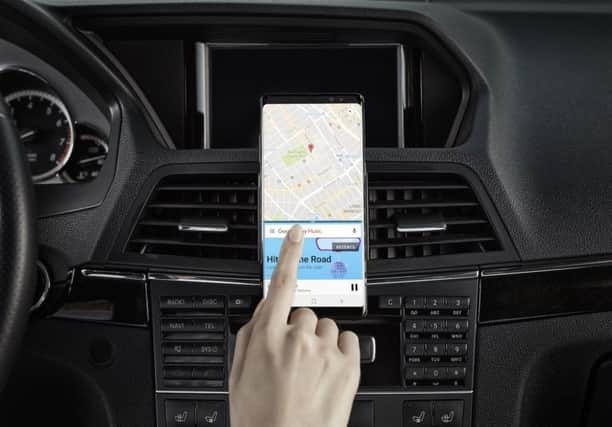How to automate your Android phone


The reason people are still pondering it is that no-one has yet come up with a definitive answer; it depends on what you want from a phone. If you prefer a handset that works out of the box with the minimum of tweaking and if price is no object, then an Apple iPhone is perfect for you. If not, you’re better off with an Android.
Google’s Android operating system is the one used by Samsung, Sony, HTC and just about every other brand except Apple. The only exceptions are those few that licence Windows from Microsoft, and those devices are recommendable only for masochists.
Advertisement
Hide AdAdvertisement
Hide AdThe fact that I am firmly in the Android camp does not imply criticism of iPhones, which are very good at what they do. But it’s worth keeping in mind that they were designed as shop windows for Apple’s own products – particularly its library of iTunes music. Apps for iPhones must comply with a set of stringent rules before they are allowed in the Apple store, and opportunities for customisation are similarly constrained. Persuading people to buy a sales catalogue that they are happy to carry around with them is the greatest coup in marketing history, but Apple has managed it.
Android, on the other hand, is a relative free-for-all. There is very little you can accomplish on a PC that you can’t also do on one of these phones, and because the range includes multiple models by competing manufacturers, the choice is vastly bigger.
Because it’s less locked-down, it is also the best platform for the inveterate tinkerer, and if you’re the sort of person who enjoys being shut in the garage with a socket set and a Workbench for company, you’ll find Android the tech equivalent.
A £3 app called Tasker illustrates perfectly the difference between the two platforms. It’s a Swiss army knife that lets you automate actions on your Android phone whenever a set of criteria defined by you is met. It can, for instance, unlock your handset whenever you’re at home, or read out texts when it senses you’re driving. Such automation is out of the question on iPhones, which allow apps to adjust only the most basic functions.
Advertisement
Hide AdAdvertisement
Hide AdIf you’ve ever found yourself frustrated at having to perform repetitive tasks to make your phone do what you want, you’ll find Tasker pays for itself quite quickly.
There are other ways of making life easier, too, especially if your handset supports near-field communication, or NFC. This is a protocol for connecting devices over very short distances, and is typically used for paying for goods from your phone at shop tills. The principle is that your handset senses the presence of discrete NFC tags and carries out the instructions thereon. You can buy blank tags by the dozen for pennies and programme them yourself, from an app on your phone – and then stick one underneath the dashboard on your car, for instance, instructing your phone to turn on Bluetooth whenever you climb in.
NFC tags work with Apple as well as Android phones, but the range of possibilities is more limited.
We are in a world of mobile tweaking not dissimilar to that of 25 years ago, when PCs were a novelty. If you enjoyed rolling up your sleeves back then, you’ll find an Android handset can once more unlock the anorak in you.